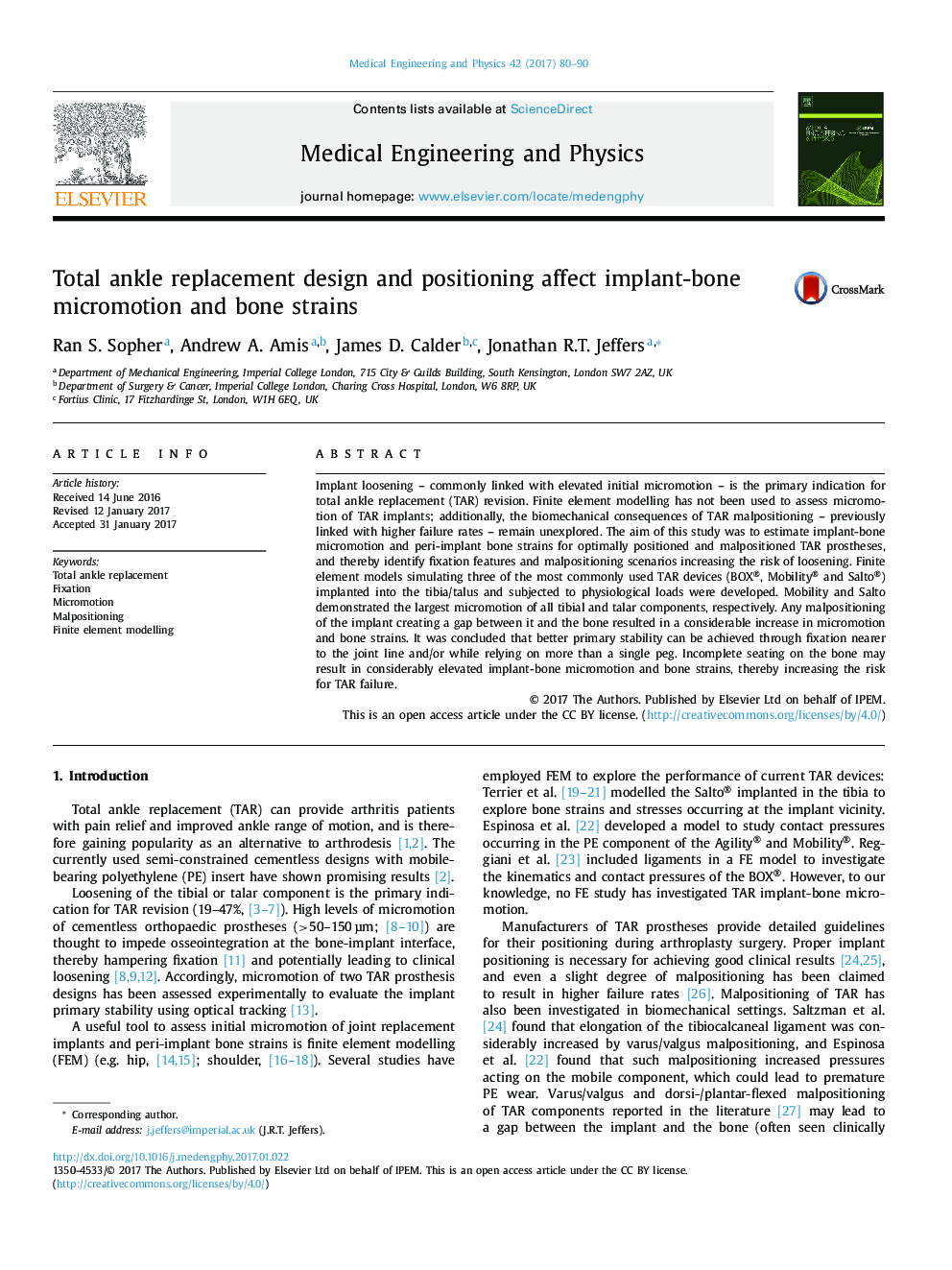| کد مقاله | کد نشریه | سال انتشار | مقاله انگلیسی | نسخه تمام متن |
|---|---|---|---|---|
| 5032738 | 1471132 | 2017 | 11 صفحه PDF | دانلود رایگان |
- A finite element model was developed to calculate micromotion of ankle implants.
- Both optimally-positioned and malpositioned cases were considered.
- Fixation nearer to the joint line relying on plural pegs improved implant stability.
- Gaps between the implant and bone greatly increased micromotion and bone strains.
Implant loosening - commonly linked with elevated initial micromotion - is the primary indication for total ankle replacement (TAR) revision. Finite element modelling has not been used to assess micromotion of TAR implants; additionally, the biomechanical consequences of TAR malpositioning - previously linked with higher failure rates - remain unexplored. The aim of this study was to estimate implant-bone micromotion and peri-implant bone strains for optimally positioned and malpositioned TAR prostheses, and thereby identify fixation features and malpositioning scenarios increasing the risk of loosening. Finite element models simulating three of the most commonly used TAR devices (BOX®, Mobility® and Salto®) implanted into the tibia/talus and subjected to physiological loads were developed. Mobility and Salto demonstrated the largest micromotion of all tibial and talar components, respectively. Any malpositioning of the implant creating a gap between it and the bone resulted in a considerable increase in micromotion and bone strains. It was concluded that better primary stability can be achieved through fixation nearer to the joint line and/or while relying on more than a single peg. Incomplete seating on the bone may result in considerably elevated implant-bone micromotion and bone strains, thereby increasing the risk for TAR failure.
Journal: Medical Engineering & Physics - Volume 42, April 2017, Pages 80-90
